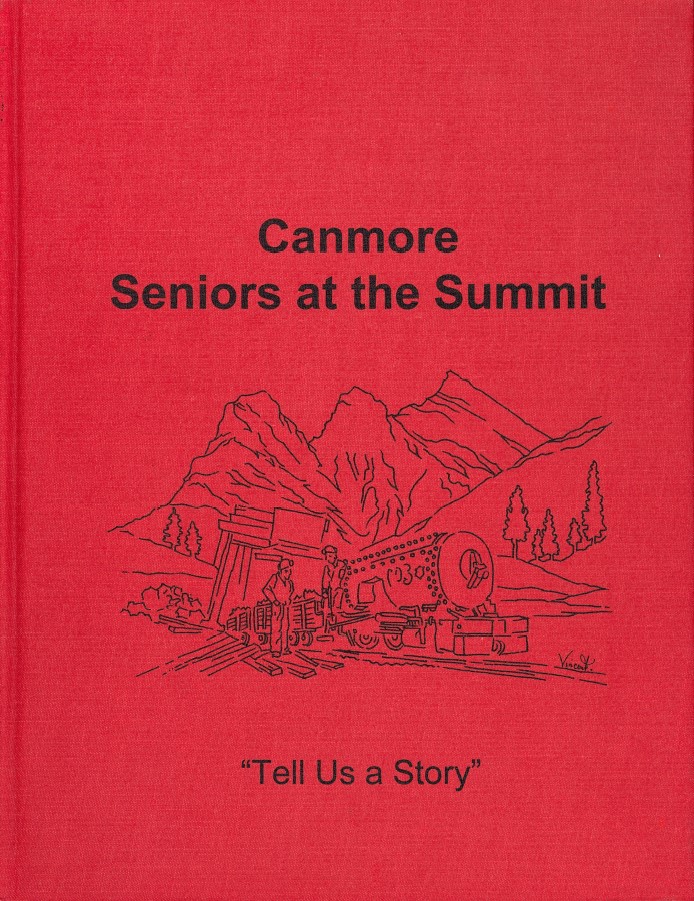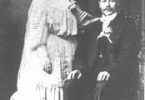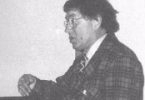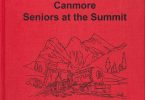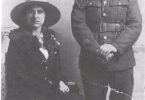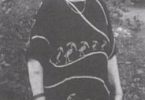John (Jack) Straw arrived in the Bow Valley in about 1910 – having secured work with the Banff Springs Hotel before leaving his native England. Born in Warrington, England, November 13, 1882, the youngest of ten children, John and several of his siblings were part of the substantial emigration from England during the early part of this century. He came to Canada after winning a coin toss with his older brother, George, to see who would come to Canada and who would go to New Zealand.
John Straw first moved to Banff and purchased a small home on Otter Street, where he was joined by his wife, Margaret (Maggie), who sailed two weeks after the sinking of the Titanic in 1912. Together, they purchased land on Martin Street where a larger home was built. Their daughter, Gladys Lillian Black (Straw), was born there, February 4, 1915. With not much else to do at night, John joined the Masonic Order and remained an active member until near his death in 1960. John worked as a carpenter for the Banff Springs Hotel until about 1917 when he left to try his hand at farming around the Wainwright area. Things did not work out and he was soon back helping the C.P.R. build the Connaught and Spiral Tunnels. Following that, he worked as a carpenter in the coal mine at Bankhead until its closure in 1923. Their son, Phillip Bernard Straw, was born on September 24, 1921. The family then moved to Canmore and John worked for the mine.
During the first year they lived in the mine apartments that were located just east of the old show hall. As soon as possible, they moved to Prospect and were next door neighbours to the Shandruks until about 1929.
That year, the Straw family was headed to Victoria. During a holiday trip, John had found a job there and had picked out a house. They returned to Canmore to clean up their affairs. Unfortunately however, a man to whom John had loaned money to build a small restaurant and house reneged on repayment. The house was located just to the east side of Ericsons’s Service Station. John bought some land a block west of there and moved the house down to its present location. They never left Canmore again, except for visits back to England.
Over the next several years (1930’s) John built the service station, which also housed the DELCO power generator. The first set of cabins were built at the back of the property. The cabins became known as “STRAW”S CABINS” and are still on the site – as of this writing.
The service station became an Imperial Oil (Esso) dealer and remained one until closing in 1980.
In 1939, Lillian Straw married Robert Black, just before he enlisted in the service. Phil Straw joined up with his best friend, Manley Flynn; both had dreams of becoming pilots. One of Phil’s greatest disappointments was the discovery that he was red/green colorblind and so couldn’t fly. At least he now knew why it had always been hard for him to find strawberries in the row in the summer. Since he couldn’t fly, fixing airplanes was the next best thing. Phil helped keep a squadron of Hurricane and Typhoon fighter planes going through England, France and Holland. While in England, he met Hilda Margaret Bridge, who would come to Canmore in 1947 and become his bride.
Life in a small, isolated coal mining town in the mountains of Canada was quite a shock for a big city girl, fresh from the hustle and bustle of war-time Britain. Loneliness, a myriad of new challenges in a new country, and living in close quarters with all your in-laws proved quite a stress for Hilda, as it must have been for many of the women who joined Canadian service men after the war. One of her greatest sources of comfort and mentor to her was Maude Towers. Friendship established with her and the whole Towers/ Mifflin clan has continued to this day.
Following W.W. 11, Bob Black and Phil Straw studied auto mechanics at SAIT. Both returned to Canmore and worked at the mine until about 1954-55. At that time John Straw retired and turned over the operation and management of the Canmore Service Station and Straw’s Cabins and Tearoom to the younger families of Phil and Hilda Straw, and Bob and Lillian Black. Business was very good until the Trans Canada Highway came through in about 1963. It saw a dramatic drop in the traffic on the 1A highway and most of the tourists went straight through to Banff. The cabins ceased operation in the early 1970’s and the service station closed in 1980 due to the poor health of Phil and Bob. Lillian and Bob Black moved to Calgary. Bob died prematurely of a heart attack in October, 1981. Phil retired to enjoy daily walks in the hills that are now Silvertip, until his death from cancer in August, 1987.
Phil and Hilda Straw had two sons: Phillip “Jeffery” born April, 1952, and John Howard, born December, 1954. Hilda shared her stay in the maternity ward of Canmore Hospital with Pauline Ullrich, who had had her son, Jeffrey, two or three days earlier.
John completed his high school in Canmore and then two years at SAIT with his buddies Ron Shellian, Gordie Miskow and David Melnyk. After several years in the construction business in Calgary, he returned to Canmore in 1991 with his wife, Lois, and their son, Sean.
Jeff attended University of Calgary, obtained a degree in civil engineering, spent several years at Lafarge in Exshaw and five years building highrises in Calgary. He currently lives in Calgary with his wife, Debbie, their two children, Calvin and Patrick, and is a real estate agent.
Bob Black was Canmore’s second mayor, serving one and a half terms from July 11, 1967 to October 18, 1971. During much of this period the town was in a complete state of upheaval as the original water and sewer systems were being installed.
One of the great debates and confusions that has always existed in Canmore is whether we were on the north or the east side of the railway tracks. Since the valley runs at almost exactly 45 degrees to the azimuth, either one is equally correct. However, since the railway and the highway are running east-west, traditional convention had it that we are on the north side of the tracks!
One of the more interesting stories that was always told was the year of the great ‘wash’ flood about 1950. Years ago, Cougar Creek was simply called “the Wash”. Then, as now, it was subject to occasional extremely high water flow, as its channel was not diked as it is now. It was late spring, following winter of heavy snow combined with the heavy end-of-May rains, that the ‘wash’ overflowed its banks on both sides, flooding the area that is now known as Indian Flats, and the flats north of the railway track where Straw’s Cabins and Ericson’s Service Station were. There are photographs with the entire area looking like a lake.
Before the #1 highway was built, the fields north of the railway tracks were great feeding areas for the local elk herds during the winter. One of the more unnerving things to have happen during the night was to be awakened by a scraping and/or banging sound outside, or on your bedroom window. Close investigation would usually reveal the sound to be elk antlers scraping on the window or the side of the house as the elk were calmly munching away on the grass beside the house. One time, when I was brave enough to get up and turn on an outside light, I was greeted with the reflection of over a hundred pair of orange eyes amid the dark shadows on the trodden snow. As a small child, it was pretty scary to have to walk out the back door into the field full of elk before you could cross the 1A highway on the way to school.
One of the greatest small pleasures of Canmore up to the mid ’70’s occurred each spring. On a warm June morning, the long melodic cheerful mating call of meadowlarks could be heard. It is truly one of the most beautiful bird songs to be heard. Easily as comforting was the call of coyotes back and forth on the hills above the hoodoos. Most of these sounds have been replaced by the steady drone of traffic hurrying down the #1 highway!
Living on the north side of the railway track had its disadvantages – mostly that the school, all the sports facilities (hockey and curling rinks), and the kids to play with, were way on the other side of town. One of the advantages was the proximity to the railway track and its coal and water loading facilities. Up until about 1953, when the CPR converted most of its engines from coal to diesel, Canmore was a good place to load up on coal, take on water and dump ashes from the tinder box. Kids on their way to school would often take few thick skinned potatoes, and toss them into the recently discharged ash pile from a train. The end result was some of the best baked potatoes ever consumed – on the way home from School.
Perhaps one of the great enigmas about old and long-time residents of Canmore and the Bow Valley is that surprisingly few of the people who were born, raised and lived their entire lives in the mountains have actually had the pleasure of standing on top of one of those majestic piles of rock. Would someone from the coast never swim in the ocean; would someone from a farm never milk a cow or ride a tractor? I think not. Yet, there seems to be a complacency within those who live among some of the greatest natural beauty on the planet. Strange, don’t you think?
Get out and live it!!
In Canmore Seniors at the Summit, ed. Canmore Seniors Association, 2000, p. 285-287.

